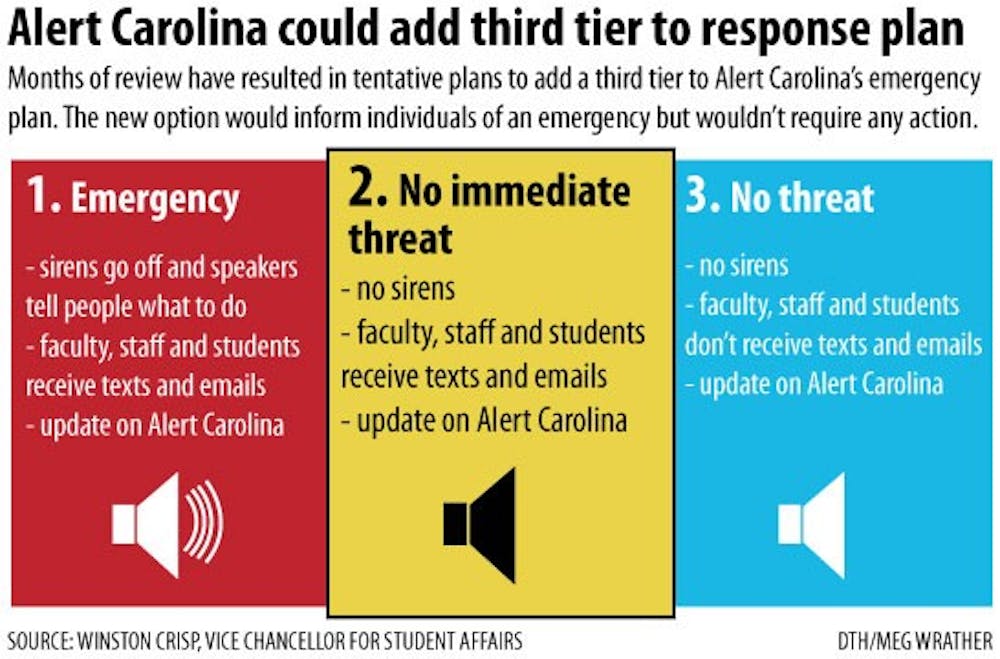In the early hours of April 4, Kate Matthews left her door in Morrison Residence Hall unlocked. Just a few floors away, some of her fellow students were being robbed at gunpoint.
The incident at Morrison sparked campus-wide protest of the University’s decision not to notify students of the fleeing gunman through its emergency warning system, Alert Carolina.
“If I had known there had been an armed robbery occurring I would have definitely gotten out of bed and locked (the door) to be on the safe side,” Matthews said.
In response to concerns about Alert Carolina, a group of University officials that included senior administrators, public safety officers and student leaders began reviewing the system in April.
Four months later, the team is almost ready to reveal significant alterations to the warning system.
The changes being discussed help fill the hole in the system that was made painfully apparent last semester, officials said.
While the current system only designates emergencies either siren or non-siren, the proposed changes add a new tier of response: one that alerts individuals of a situation but does not sound the alarm, said Vice Chancellor for Student Affairs Winston Crisp.
The changes are still in draft form, but will be made public within the next week or two, said University spokesman Mike McFarland.
Tentative changes



